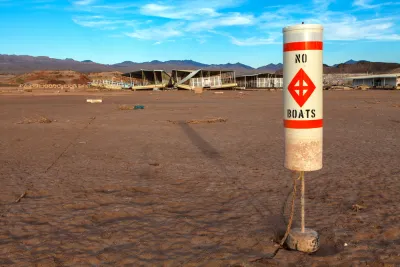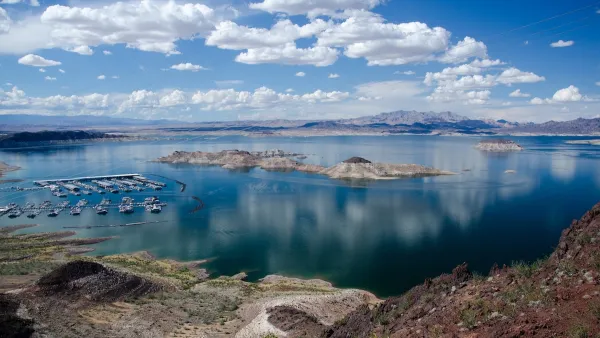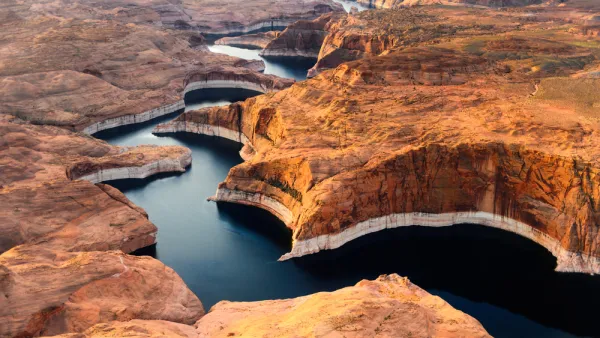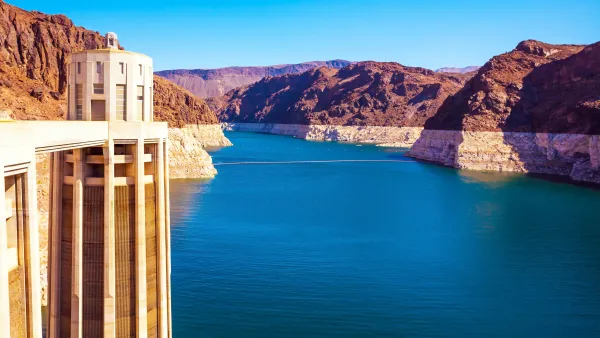While the historic agreement set a new precedent for water rights, its inherent flaws, growing demand, and the threat of climate change make much of it obsolete for today’s needs.

The first treaty in U.S. history to bring together more than two states, the Colorado River Compact turns one hundred this month. But, as Jonathan Thompson writes in High Country News, the historic seven-state agreement is “showing its age,” no longer a viable document for addressing the water shortage facing communities along the Colorado River today.
The article analyzes the compact’s history, its most relevant provisions, and how today’s policymakers can redress the mistakes made in those early days and plan for a more resilient future. The treaty was full of holes from the beginning, Thompson explains. “Tribal nations were not only left out of the Compact and negotiations, but their senior and therefore stronger water rights were discounted altogether.” Thompson asserts that “The exclusion was far worse than a gross oversight; it was a blatant attack on tribal sovereignty.”
Thompson adds that the compact was based on flawed or purposely misleading assumptions about water supplies and needs. Yet “The document’s framers never even considered the possibility that the river’s flows would diminish over time, as is now the case thanks to climate-change-induced aridification.” The original document allocated 16 million acre-feet of water “in perpetuity” to irrigation, calling it 80 percent of the river’s flow, a conscious overestimate even at the time.
According to Thompson, “Now that it’s reaching its centennial, perhaps it’s time for the Colorado River Compact to retire, and for the river’s users — all of them — to sit down and negotiate a new pact for a changing world.”
FULL STORY: On its 100th birthday, the Colorado River Compact shows its age

Analysis: Cybertruck Fatality Rate Far Exceeds That of Ford Pinto
The Tesla Cybertruck was recalled seven times last year.

National Parks Layoffs Will Cause Communities to Lose Billions
Thousands of essential park workers were laid off this week, just before the busy spring break season.

Retro-silient?: America’s First “Eco-burb,” The Woodlands Turns 50
A master-planned community north of Houston offers lessons on green infrastructure and resilient design, but falls short of its founder’s lofty affordability and walkability goals.

Test News Post 1
This is a summary

Analysis: Cybertruck Fatality Rate Far Exceeds That of Ford Pinto
The Tesla Cybertruck was recalled seven times last year.

Test News Headline 46
Test for the image on the front page.
Urban Design for Planners 1: Software Tools
This six-course series explores essential urban design concepts using open source software and equips planners with the tools they need to participate fully in the urban design process.
Planning for Universal Design
Learn the tools for implementing Universal Design in planning regulations.
EMC Planning Group, Inc.
Planetizen
Planetizen
Mpact (formerly Rail~Volution)
Great Falls Development Authority, Inc.
HUDs Office of Policy Development and Research
NYU Wagner Graduate School of Public Service




























